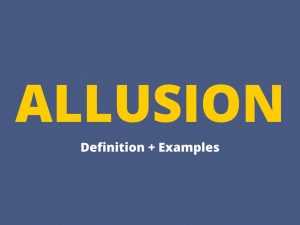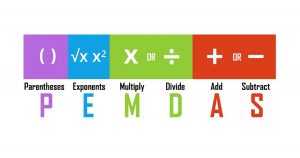Before we learn about variable equations, let us first clear our concepts about the Basics of Algebra. By definition, it covers the simple processes of mathematics similar to addition, subtraction, multiplication, & division concerning both constants as well as variables.
For instance, x+10 = 0. This introduces a significant algebraic theory known as equations. An analogy can be made between the algebraic equation and that of a weighing scale where the weights are balanced with the help of numbers or constants.
Algebra is the division of Maths that uses alphabetical letters to find unidentified numbers. These alphabets are also called variables. The values which are identified in the given expression such as numbers are called constants. When we state its fundamentals, it covers the broad algebraic expressions, formulas, and identities, which are used to solve many mathematical problems.
Some of the Terms Associated with Basic Algebra Skills are Cited Below.
1. Exponent
2. Expression
3. Polynomial (Monomial, binomial and trinomial)
4. Like terms and Unlike terms
5. Constants
An equation is a statement that indicates two same identities divided by the “=” sign. While an expression is a group of different terms disconnected by the ‘+’ or ‘-‘ sign.
Like terms are those terms whose variables and exponents are identical.
Some of the Basic Algebra Rules are Cited Below:
- The Symmetry rule
- The commutative rules
- The inverse of adding
- Two rules for equation
The Common Arithmetic Operations Done in the Case of Algebra are as Follows:
- Addition: x + y
- Subtraction: x – y
- Multiplication: XY
- Division: x/y or x ÷ y
Where x and y are the variables.
The Universal Formulas Used in Algebra to Solve Algebraic Equations and Discover the Values of Unknown Variables are as follows:
- a2 – b2 = (a – b)(a + b)
- (a+b)2 = a2 + 2ab + b2
- a2 + b2 = (a – b)2 + 2ab
- (a – b)2 = a2 – 2ab + b2
- (a + b + c)2 = a2 + b2 + c2 + 2ab + 2ac + 2bc
- (a – b – c)2 = a2 + b2 + c2 – 2ab – 2ac + 2bc
- (a + b)3 = a3 + 3a2b + 3ab3 + b3
- (a – b)3 = a3 – 3a2b + 3ab2 – b3
What is an Equation?
An equation is an expression with one variable, this variable has an answer, or value, that makes the equation accurate.
Furthermore, we explain what a variable equation signifies and the reasons for using one. Below is an explanation;
• An equation is a mathematical proclamation that proclaims the equivalence of two expressions.
• When an equation comprises a variable, such as xx, the variable is measured with an unknown value.
• The values of the variables that make the equation accurate are the solutions of the equation and can be found by deciphering the equation.
• A solution of an equation can be substantiated, or checked, by replacing its value for the variable in the equation.
Fundamental Expressions
- Solution: A value that can be replaced for a variable to make an equation correct.
- Unknown: A variable equation that necessitates being solved for.
- Equation: A mathematical statement that proclaims the equivalence of two expressions.
An equation is a mathematical account that states the equivalence of two expressions. For instance, the assertion that “two plus five is equal to seven” is denoted by the equation 2+5=72+5=7.
In numerous cases, an equation comprises one or more variables. These are still written by enlisting each expression on either side of an equals sign (==). For instance, the equation x+3=5x+3=5, read “xx plus three equals five”, affirms that the expression x+3x+3 is equal to the value 5.
It is likely for equations to have more than one variable. For illustration, x+y+7=13x+y+7=13 is an equation in double variables. Nevertheless, this lesson emphasizes exclusively equations in one variable.
How to Solve Variable Equations
When an equation comprises a variable such as xx, this variable is considered to be an unknown value. In several cases, we can discover the possible values for xx that would make the equation correct.
For instance, think through the equation we were speaking about above: x+3=5x+3=5. You have most likely already solved that the only possible value of xx is 2 because you know that 2+3=52+3=5 is an accurate equation. We use an equal symbol to show that we know the value of a given variable. In this instance, we write x=2x=2 (read as “xx equals two”).
The values of the variables that create an equation correctly are called the solutions of the equation. In chance, solving an equation means defining what values for the variables make the equation a proper statement.
The equation above was objectively straightforward; it was easy for us to recognize the solution as x=2x=2.
How do You Verify Solutions
If a number is set up as a solution to an equation, then replacing that number in the place of the variable should make the equation correct.
Therefore, we can counter-check whether or not a number is a true solution to a given equation or not
For instance, let’s scrutinize whether x=3x=3 is a solution to the equation 2x+31=372x+31=37.
Replacing 3 for xx, we have:
2(3)+31=376+31=372(3)+31=376+31=37
This equality is an accurate statement. Hence, we can conclude that x=3x=3 is, in fact, an answer to the equation 2x+31=372x+31=37.
How to Solve Two Variable Equations
A linear equation in two variables, x, and y, can be transcribed in the form
ax + by = c
where x and y are actual numbers and a & b are not both zero.
For instance, 3x + 2y = 8 is a linear equation in two variables.
The problem of how to solve an equation with two variables has the solution that such an equation is a well-ordered pair of numbers (x, y) that makes the equation correct when the values of x and y are replaced in the equation.
For instance, both (2, 1) and (0, 4) are solutions to the equation but (2, 0) is not a solution. A linear equation in two variables has substantially many solutions.
If a different linear equation in the same variables is given, it is typically potential to find a unique solution for both equations. Two equations with identical variables are called a system of equations, and the equations in the system are called simultaneous equations.
To unravel the question of how to solve an equation with two variables you will need a system of two equations to discover an ordered pair of numbers that contains both equations in the system.
There are two rudimentary methods for solving systems of linear equations, byways of substitution or by elimination.
The Substitution Method
In the substitution method, one equation is worked out to prompt one variable in terms of the other. Then the expression is replaced in the other equation.
For instance, to solve the system of equations
3x + 2y = 2
y + 8 = 3x
Segregate the variable y in the equation y + 8 = 3x to get y = 3x – 8.
Then, replace 3x – 8 for y into the equation 3x + 2y = 2.
3x + 2 (3x – 8) = 2
3x + 6x – 16 = 2
9x – 16 = 2
9x = 18
Substitute x = 2 into y = 3x – 8.to acquire the value for y
y = 3 (2) – 8
y = 6 – 8 = – 2
Answer: x = 2 and y = –2
3 Variable Equations System
To Solve 3 variable systems of equations: means there is a system of three equations in three variables.
• You will need to identify unpredictable systems of equations comprising three variables.
• Express the solution of a system of reliant equations containing 3 variable systems of equations using standard notations.
John expected an inheritance of $12,000 that he allocated into three parts and capitalized in three ways: in a money-market fund remunerating 3% annual interest; in municipal bonds paying 4% yearly interest, and in mutual funds paying 7% every twelve months interest.
John spent an amount of $4,000 in municipal funds than on municipal bonds. He made $670 in the interest the first year. Can you tell how much did John invest in each type of fund?
Accepting the correct method for setting up problems such as this one makes finding a solution a matter of ensuring a pattern. We will explain this and similar problems concerning 3 variable systems of equations and three variables in this section.
Doing so uses related techniques such as those used to solve systems of two equations in two variables. Nevertheless, finding solutions to 3 variable systems of equations requires a bit more organization and a touch of visual calisthenics.
How to Solve 3 Variable System of Equations
To answer systems of equations in three variables, known as three-by-three systems, the main goal is to remove one variable at a time to achieve back-substitution. A solution to a 3 Variable System of Equations (x,y,z),(x,y,z), is called an ordered triple.
To find an explanation, we can execute the following operations:
1. Swap the order of any two equations.
2. Multiply both sides of an equation by a nonzero constant.
3. Add a nonzero multiple of one equation to a new equation.
Explicitly, the ordered triple describes the point that is the intersection of three planes in space. You can envisage such an intersection by visualizing any corner in a rectangular room. A corner is defined by three planes: two connecting walls and the floor. Any point where two walls and the floor meet symbolizes the intersection of three planes.
A COMMON REMINDER: NUMBER OF POTENTIAL SOLUTIONS
The planes exemplify possible solution situations for three-by-three systems.
• Systems that have an alone solution are those which, after eradication, result in a solution set comprising of an ordered triple {(x,y,z)}{(x,y,z)}. Realistically, the ordered triple describes a point that is the juncture of three planes in space.
• Systems that have a countless number of solutions are those which, after elimination, resulting in an expression that is always correct, such as 0=00=0. Explicitly, an unlimited number of solutions signifies a line or coincident plane that serves as the intersection of three planes in space.
• Systems that have no solution are those that, after removal, resulting in an inconsistent statement, such as 3=03=0. A system with no solution is denoted by three planes with no point in common.
How to Decide Whether the Ordered Triple (3,−2,1)(3,−2,1) is a Solution to the System.
x+y+z=26x−4y+5z=315x+2y+2z=13x+y+z=26x−4y+5z=315x+2y+2z=13
We will check for each equation by replacing the values of the ordered triple for x,yx,y, and zz.
x+y+z=2(3)+(−2)+(1)=2Truex+y+z=2(3)+(−2)+(1)=2True 6x−4y+5z=316(3)−4(−2)+5(1)=3118+8+5=31True6x−4y+5z=316(3)−4(−2)+5(1)=3118+8+5=31True 5x+2y+2z=135(3)+2(−2)+2(1)=1315−4+2=13True5x+2y+2z=135(3)+2(−2)+2(1)=1315−4+2=13True
The ordered triple (3,−2,1)(3,−2,1) is undeniably a solution to the system.
Categorize Solutions into 3 Variable Systems of Equations
Just as with structures of equations in two variables, we may come across an erratic system of equations in three variables, which means that it does not have a solution that fulfills all three equations.
The said equations may signify three parallel planes, two parallel planes, and one crisscrossing plane, or three planes that overlap the other two but are not in the same position. The method of elimination will result in an incorrect statement, such as 3=73=7 or some other inconsistency.
Basic Concepts
- A solution set is an ordered triple {(x,y,z)}{(x,y,z)} that epitomizes the juncture of three planes in space.
- A system of three equations in three variables can be answered using a sequence of steps that force a variable to be eliminated. The steps comprise switching the order of equations, multiplying both sides of an equation by a nonzero constant, and adding a nonzero multiple of one equation to a different equation.
- Systems of three equations in three variables are beneficial for solving many different types of everyday problems.
- A system of equations in three variables is uneven if no solution exists. After carrying out elimination operations, the result is a contradiction.
- Systems of equations in three variables that are varying could result from three parallel planes, two parallel planes, and one overlapping plane, or three planes that interconnect the other two but not at the same location.
- A system of equations in three variables is reliant on if it has an endless number of solutions. After carrying out elimination operations, the result is an identity.
- Systems of equations in three variables that need could result from three matching planes, three planes intersecting at a line, or two matching planes that intersect the third on a line.
Solving Equations with a Variable on Both Sides
Occasionally, the unidentified quantity will appear on both sides of an equation. This is where the properties of erudite in 5.1 and 5.2 come in handy. An amount with a variable can be treated just like a quantity deprived of variables — a quantity with a variable follows all the rules learned in the last two sections.
For instance, we can increase a quantity with a variable to both sides without altering the equation or the values that make it accurate:
15 – x = 4x
15 – x + x = 4x + x
15 + 0x = 5x
15 = 5x
3 = x
x = 3
Likewise, we can also subtract a term with a variable from both sides of the equation:
5x = 6 + 2x
5x – 2x = 6 + 2x – 2x
3x = 6 + 0x
3x = 6
x = 2
Subsequently simplifying, the first step in solving an equation with a variable on both sides is to get the Variable on One Side. This is completed by retreating the addition or subtraction of one of the terms with the variable.
In other words, we must add to both sides or subtract from both sides one of the quantities that comprise the variable. It is usually easier to add or subtract the lesser quantity from the larger quantity, so we are occupied with positive coefficients, but either way works.
Illustration 1. Solve for x: 3x + 2x = 12 – x
• Simplify: 5x = 12 – x
• Get the variable on one side:
o 5x + x = 12 – x + x
o 6x = 12
• Solve using inverse operations:
o =
o x = 2
• Check: 3(2) + 2(2) = 12 – 2 ? Yes!
Illustration 2. Solve for y: 5y – 3 = 3y + 5
• The equation is at present simplified.
• Get the variable on one side:
o 5y – 3 – 3y = 3y + 5 – 3y
o 5y – 3y – 3 = 3y – 3y + 5
o 2y – 3 = 5
• Solve using inverse operations:
o 2y – 3 + 3 = 5 + 3
o 2y = 8
o =
o y = 4
• Check: 5(4) – 3 = 3(4) + 5 ? Yes!
The equations we solved in the last section were streamlined nicely so that we could use the division property to segregate the variable and solve the equation. Occasionally, after you simplify you may have a variable and a constant term on the same side of the equal sign.
Our approach will involve selecting one side of the equation to be the variable side, and the other side of the equation to be the constant side. This will benefit us with the organization.
Then, we will practice the Subtraction and Addition Properties of Equality, step by step, to segregate the variable terms on one side of the equation.
How to Solve Equations with Variables on Both Sides
You may have observed that in all the illustrations of equations we have demonstrated and explained so far, we had variables on merely one side of the equation. This does not happen all the time, so now we’ll understand How to Solve Equations with Variables on Both Sides.
We will start as we did directly above i.e. by selecting a variable side and a constant side, and then using the Subtraction and Addition Properties of Equality to bring together all variables on one side and all constants on the other side.
Recall, what you do to the left side of the equation, you must do to the right side as well.
In the next sample, the variable, xx, is on both sides, but the constants appear only on the right side, so we’ll make the right side the “constant” side & consequently the left side of the equation will be the “variable” side.
Using the 3 variable system of equations calculator is a free online tool that shows the value of the unknown variable. The unfamiliar value of the given equation is displayed in a fraction of a second.
Solving Equations With Variables on Both Sides Calculator?
The technique to use this calculator is as follows:
Phase 1: Enter the equation in the “Solve the Equation” field
Phase 2: Click the button “Solve” to get the output
Phase 3: The unknown value of the given equation will be displayed in a new window
Defining the Equation:
In Arithmetic, an equation is an expression that is equivalent to two values. It comprises two expressions separated by an equal sign “=”. If an expression is characterized using an equal sign, the value of one side should be equal to the value on the other side. Most linear equation encompasses one or two variables.
Let us deliberate on a specimen,
Let x be an unknown value
x = 20 +15
We can say that the value of x should satiate the value of 35. Because, 20+ 15 = 35. The method of finding the unknown value in an equation is known as “Solving the Equation”.
Standard Form
The standard form used to signify the equation is given below:
Ax + By = C
Here, x and y are the two unidentified values (i.e., variable)
Frequently Asked Questions
1. Solve the given equation: 5x + 2 = 12
A. 5x+2=12
5x=12-2
x=10/5
x=2
2. What are the diverse types of equations?
A. The dissimilar types of equations are as follows:
• Linear Equation
• Quadratic Equation
• Exponential Equation
• Radical Equation
3. Classification of linear equations with illustrations.
A. The three different categorizations of linear equations are as follows:
• Equation with one variable
Example: 5x =10
• Equation with two variables
Example: 2x + 4y = 10
• Equation with three variables
Example: x + y + z = 15

Relevant Articles
Public vs Private Colleges – Which is better for you?
With approximately 4,300 colleges and universities in the United States, …
Public vs Private Colleges – Which is better for you? Read More »
Read More >>How to Use an Abacus for Basic Math Operations?
In this article, we’ll learn about how to use an …
How to Use an Abacus for Basic Math Operations? Read More »
Read More >>Allusion Definition and Examples
An allusion is a short reference to a person, object, …
Allusion Definition and Examples Read More »
Read More >>PEMDAS: What Does It Mean and Why Does It Matter?
In mathematics, the order of operations is important to solve …
PEMDAS: What Does It Mean and Why Does It Matter? Read More »
Read More >>




















Comments: